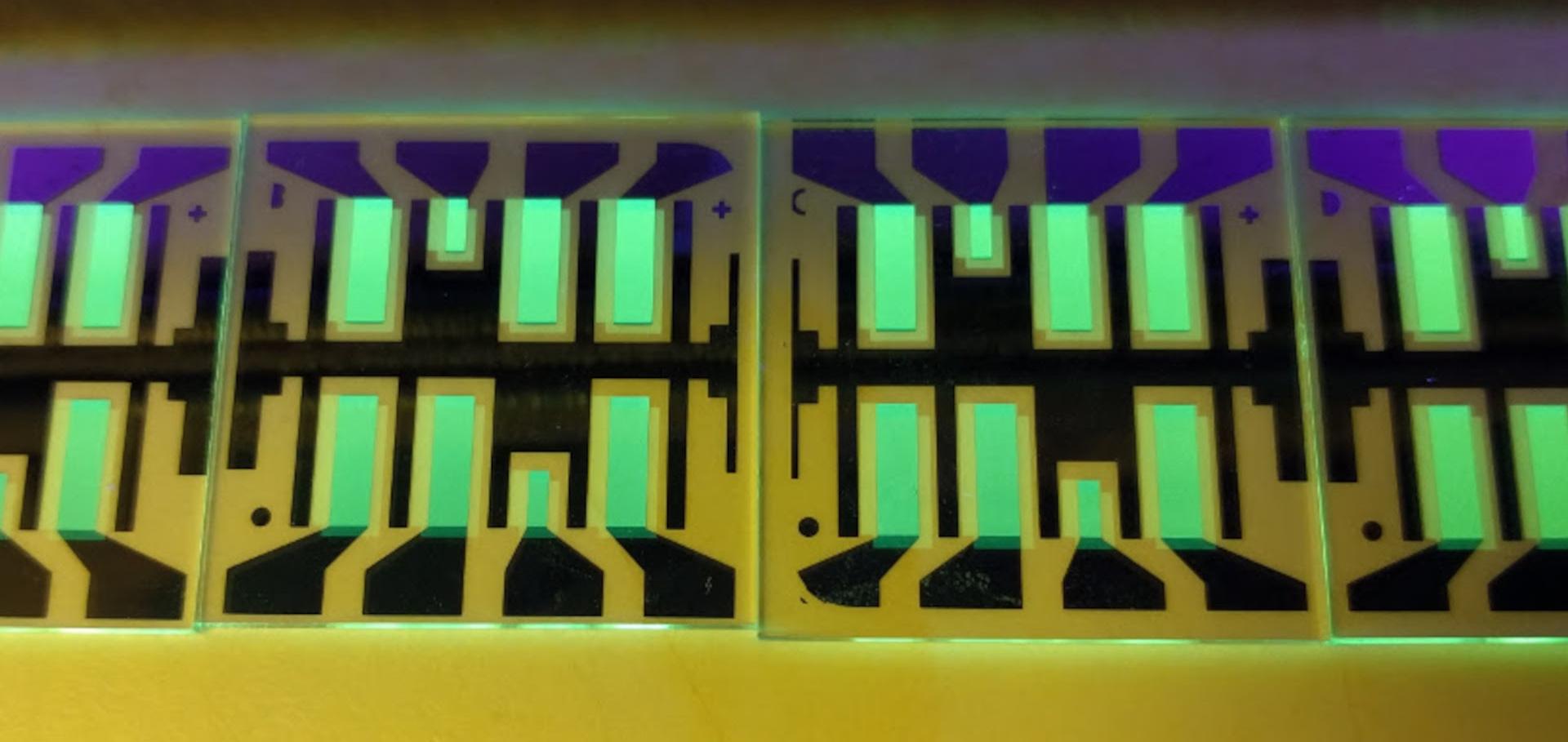Datamining and analysis of the key parameters in organic solar cells
Proceedings of SPIE - The International Society for Optical Engineering 6197 (2006)
Abstract:
The production process of organic solar cells (OSCs) is investigated and the effects of parameter variations on experimental results are analysed with the Principal Component Analysis (PCA). This statistical method is applied to an exemplar data set, in which the materials' concentration in the absorber solution and the spincoating speed of the absorber solution were varied intentionally. In addition to the remaining production parameters, the time intervals between the steps were included in the analysis. A large part of the variance in the experimental results can be explained with the evaporation conditions, the spincoating speed and the concentrations in the absorber solution. The PCA also confirms that the OSC is a complex and interdependent system, where one has to analyse the influence of several parameters at the same time in order to understand their effects on the OSC properties. The PCA results will be used to focus further experiments on the identified key parameters.Optical near field phenomena in planar and structured organic solar cells
Proceedings of SPIE - The International Society for Optical Engineering 6197 (2006)
Abstract:
One key problem in optimizing organic solar cells is to maximize the absorption of incident light and to keep the charge carrier transport paths as short as possible in order to minimize transport losses. The large versatility of organic semiconductors and compositions requires specific optimization of each system. We investigate two model systems, the MDMO-PPV:PCBM blend and the P3HT:PCBM blend. Due to the small thickness of the functional layers in the order of several ten nanometers, coherent optics has to be considered and therefore interference effects play a dominant role. The influence of the thickness of the photoactive layer on the light absorption is investigated and compared with experimental data. The potential of an optical spacer which is introduced between the aluminium electrode and the photoactive layer to enhance the light harvesting is evaluated by optical modelling. Optical modelling becomes more complex for novel solar cell architectures based on nanostructured substrates. Exemplary optical simulations are presented for a nanoelectrode solar cell architecture.Organic solar cells with inverted layer sequence incorporating optical spacers - Simulation and experiment
Proceedings of SPIE - The International Society for Optical Engineering 6197 (2006)
Abstract:
In this paper we present detailed optical simulations of organic bulk-heteroj unction solar cells built with inverted layer sequence as compared to the commonly used setup which is based on indium tin oxide (ITO) covered glass or plastic substrates and where the metal electrode is evaporated on top of the active absorber blend. The inverted setup may have production related advantages over the conventional setup, as the metal electrode is first evaporated onto the substrate and afterwards only wet chemical processes are needed. Additionally ITO can be replaced with a suited module concept. The effects of light trapping with an optical spacer, namely a transparent conductive layer between the absorber and the metallic electrode are investigated for the inverted setup. The results show that the insertion of an optical spacer does not increase the maximal obtainable short circuit current density and is only beneficial if a decrease of film thickness of the active absorber results in a higher internal quantum efficiency, open circuit voltage or fill factor. In the experimental section we show that the inversion of the layer sequence can be realised without any loss in device efficiency as compared to devices with the conventional layer sequence.The influence of doping on the performance of organic bulk heterojunction solar cells
Proceedings of SPIE - The International Society for Optical Engineering 6192 (2006)
Abstract:
We investigated organic bulk-heterojunction solar cells based on an absorber blend of poly(3-hexylthiophene) (P3HT) and [6,6]-phenyl C61-butyric acid methyl ester (PCBM) by electrical impedance spectroscopy (EIS). A strong neck in the modulus plot of the EIS-spectra indicates that the absorber is divided into two regions of different conductivities. A similar behaviour was observed for pure P3HT-diodes. Hence, it can be concluded that the PCBM:P3HT absorber is p-doped by impurities of P3HT, so that a Schottky-like contact with aluminium is formed. It is known from literature, that annealing of PCBM:P3HT solar cells leads to drastic improvement of the photovoltaic performance. We compared the current-voltage characteristics and impedance spectra before and after consecutive annealing steps. After the annealing an expansion of the depletion region was observed, indicating that volatile dopants were evaporated out of the absorber. This contributes to an improved photovoltaic performance as the separation of the generated charges in the depletion region is more efficient than in the non-depleted region. Also an improved rectification behaviour might be caused by a lower doping level.Electroabsorption studies of organic bulk-heterojunction solar cells
Thin Solid Films 493:1-2 (2005) 170-174


